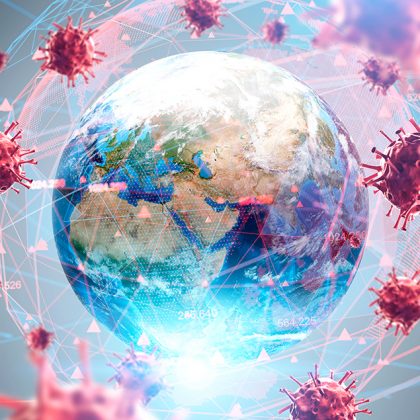ILO C90: A roadmap on tackling violence and harassment throughout business operations and activities
Violence and harassment are pervasive throughout all countries, occupations and workplaces. According to the WHO, 1 in 3 women, around 736 million, are subjected to violence throughout their lifetime. While domestic violence is the most prevalent form, 6% report being sexually assaulted by someone other than their husband or partner.
These numbers reveal already alarmingly high rates of violence against women, but they do not even capture cases of harassment, nor do they reflect the ongoing impact of COVID-19.
Indeed, multiple factors have led to increased exposure to violence and harassment, particularly for essential workers.
Health and care workers have been violently attacked or harassed due to their stigmatisation as vectors of COVID-19 contagion. This last sentence is not clear? The lack of sufficient staff, personal protection equipment and facilities have created a stressful environment, leading to a higher risk of violence and harassment by patients and their families, as well as by colleagues and managers.
Even beyond the health and care sector, violence and harassment have increased. For many, the home is now their workplace, which comes with heightened risks of violence and harassment. Alarming spikes in domestic violence, particularly against women and people with disabilities, but also against men, have been recorded in many countries. The increase in teleworking also appears to be translating into an increase in cyberbullying.
In my article published last June in the Business and Human Rights Journal, I highlighted how ILO Convention No.190 on Violence and Harassment and its accompanying Recommendation No.206, which entered into force this year, provide a clear roadmap for governments and businesses on how to tackle violence and harassment in the world of work, in collaboration with workers.
The instruments are particularly suited to provide the necessary normative guidance for both governments and businesses in their respective roles when it comes to the violence and harassment in the business context. The UNGPs already include a reference to violence but only in the context of conflict. Principle 7 stipulates that States should provide adequate assistance to business enterprises operating in conflict affected areas ‘to assess and address the heightened risks of abuses, paying special attention to both gender-based and sexual violence’. However, there is no guidance on gender-based violence more broadly, and no reference to harassment, which is persistent in most countries.
The ILO instruments can therefore reinforce and complement the guidance provided by the UN Working Group when it comes to ensuring that adequate attention to the differentiated impacts of business-related human rights abuses on women is considered in the implementation of the UNGPs.
Ratifying governments are obliged to adopt laws and regulations requiring employers to have workplace policies addressing violence and harassment, risk assessments, prevention measures, and training (article 9, Convention No. 190).
The instruments helpfully define violence and harassment as a range of unacceptable behaviours and practices, which helps capture all different forms and manifestations of violence and harassment that may range from physical abuse to mobbing and stalking.
By providing for widest personal scope of application under international labour standards, the instruments offer protection to millions of workers, including those most marginalized and working in insecure, low-paid, unsafe jobs and in the informal economy. Preventative and protective measures are applicable beyond the physical workplace and include the entire world of work. Moreover, there is a recognition of the spill over effect impact of domestic violence into the workplace. The instruments therefore call for practical measures, such as leave from work and awareness-raising.
Given the serious under-reporting of violations, it is also notable that the instruments require effective access to remedy, including gender-responsive, safe and effective complaint and dispute resolution mechanisms, support, services, and remedies [article 10(e), Convention No. 190]. In many cases, access to remedy is hampered by the exorbitant evidentiary burden that those who experienced abuse must meet. The instruments therefore appropriately call for a shift in the burden of proof.
Moreover, the instruments outline the distinct role and functions for governments, employers and workers and their respective organizations in combating violence and harassment, as well as the critical steps needed to make their objectives a reality in the world of work. For example, workers and their representatives need to be part of the design, implementation and monitoring of company policies on violence and harassment.
While the instruments offer solutions and guidance on critical aspects for combatting violence and harassment, the realisation of their potential depends on their ratification and implementation. So far, ten countries have ratified Convention No.190. Swift progress on ratification is therefore urgently needed.
At the same time, companies do not need to wait for ratification in order to combat violence and harassment throughout their operations and activities. Numerous companies are already engaging with trade unions implementing critical provisions of the instruments. For example, Unilever has entered into an agreement with the trade unions IndustriALL Global Union and the IUF covering all its employees, including those hired through third-party labour suppliers, jointly setting out procedures for identifying, raising awareness and grievances related to sexual harassment.
Violence and harassment is an affront to human dignity and a major barrier to equality and decent work. It is high time to put an end to it and now the global community has tools and a roadmap to make progress.
Makbule Sahan is an advisor on employment and social affairs in the European Parliament. Previously, she worked as a lawyer for the International Trade Union Confederation and the International Labour Organization.






